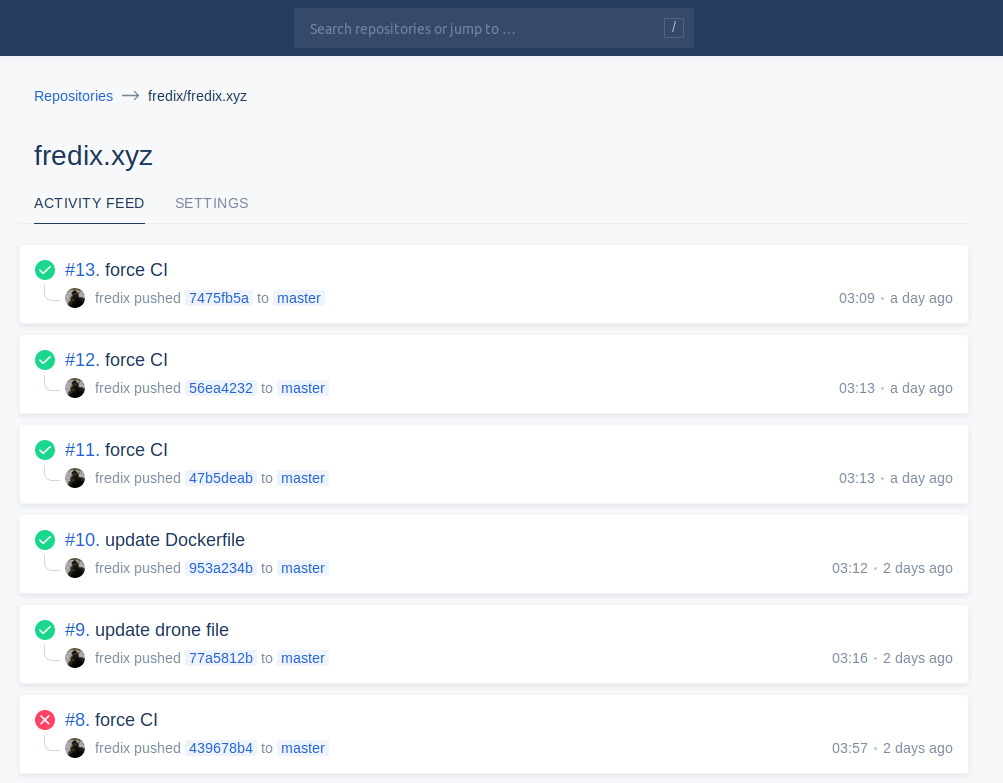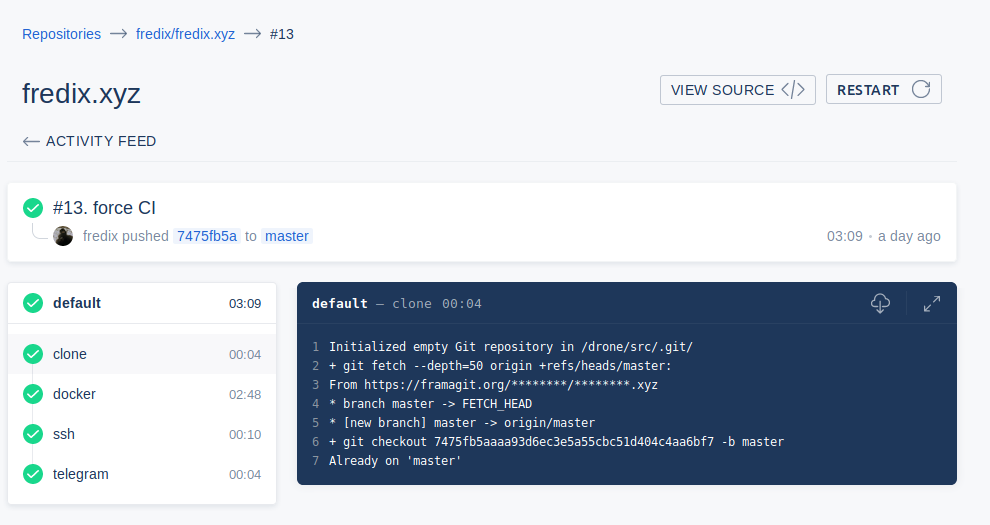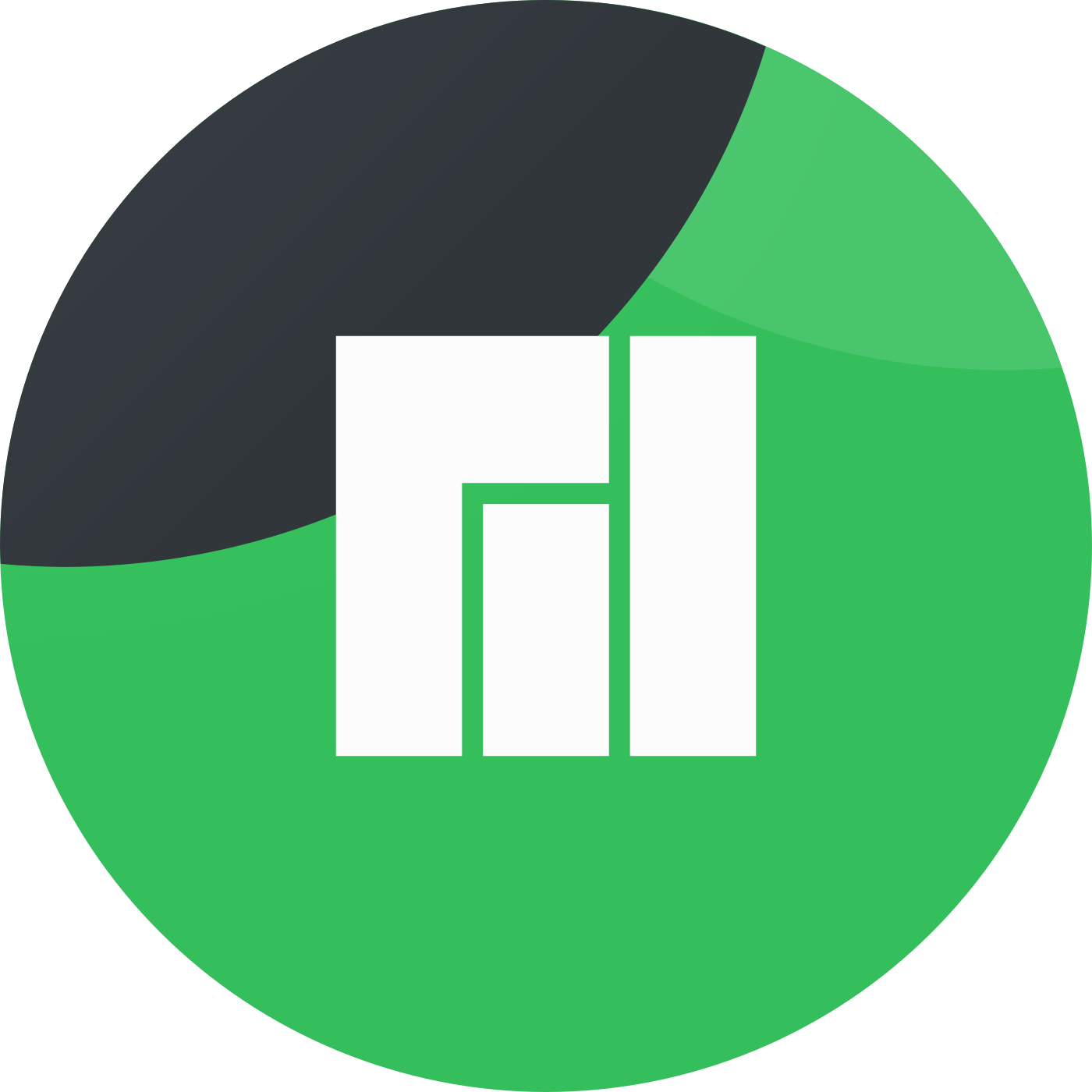Cet article présente succintement la nouvelle version de Drone 1 et les changements de configuration. Pour rappel Drone est un outil d’intégration et de déploiement continu.
Tout d’abord l’interface web a bien évoluée, elle est très clair et agréable.

Un pipeline peut maintenant être relancé depuis l’interface et le lien view source permet de pointer vers le commit qui l’a déclenché.

la syntaxe du fichier pipeline .drone.yml a changé, elle se présente maintenant sous cette forme :
kind: pipeline
name: default
platform:
os: linux
arch: arm64
clone:
depth: 50
steps:
- name: docker
image: plugins/docker:linux-arm64
settings:
repo: fredix/arm64v8-blog
tags: latest
dockerfile: Dockerfile.arm64
username:
from_secret: docker_username
password:
from_secret: docker_password
- name: ssh
image: fredix/arm64v8-alpine-drone-ssh
volumes:
- name: key
path: /root/ssh/drone.key
settings:
host: 192.168.254.1
port: 22
username: drone
key_path: /root/ssh/drone.key
script:
# - "sudo docker service update --image fredix/arm64v8-blog hugo-arm64"
- "sudo docker stack deploy --compose-file=/root/scripts/swarm/hugo/hugo-arm64v8.yml hugo-arm64"
when:
status: success
- name: telegram
image: fredix/arm64v8-alpine-drone-telegram
settings:
token:
from_secret: plugin_token
to:
from_secret: plugin_to
message: >
{{#success build.status}}
build {{build.number}} succeeded on {{repo.name}}. Good job {{build.author}} {{build.link}}
{{else}}
build {{build.number}} failed on {{repo.name}}. Fix me please {{build.author}} {{build.link}}
{{/success}}
when:
status: [ success, failure ]
volumes:
- name: key
host:
path: /docker_volumes/drone_agent/drone.key
Le docker compose a également changé car Drone supporte maintenant officiellement l’architecture ARM
version: '3'
services:
drone-server:
image: drone/drone:linux-arm64
restart: always
env_file: .env.production-server
ports:
- 80
- 443
volumes:
- /docker_volumes/drone_server:/data
networks:
- drone-infra
- traefik-net
deploy:
placement:
constraints:
- node.labels.location == cloud-arm64
labels:
- "traefik.port=80"
- "traefik.docker.network=traefik-net"
- "traefik.frontend.rule=Host:drone.fredix.xyz"
drone-agent:
image: drone/agent:linux-arm64
restart: always
env_file: .env.production-agent
command: agent
depends_on:
- drone-server
volumes:
- /var/run/docker.sock:/var/run/docker.sock
- /docker_volumes/drone_agent/drone.key:/drone.key
networks:
- drone-infra
deploy:
placement:
constraints:
- node.labels.location == cloud-arm64
networks:
traefik-net:
external: true
drone-infra:
external: true
J’ai du changer également les variables d’environnement
cat .env.production-server
DRONE_SERVER_HOST=drone.fredix.xyz
DRONE_SERVER_PROTO=https
DRONE_GITLAB_CLIENT_ID=TOKEN
DRONE_GITLAB_CLIENT_SECRET=TOKEN
DRONE_GITLAB_SERVER=https://framagit.org
DRONE_RPC_SERVER=https://drone.fredix.xyz
DRONE_RPC_SECRET=SECRET
DRONE_LOGS_DEBUG=true
DRONE_LOGS_PRETTY=false
DRONE_USER_CREATE=username:fredix,admin:true
DRONE_AGENTS_ENABLED=true
cat .env.production-agent
DRONE_TIMEOUT=10m
DRONE_MAX_PROCS=3
DRONE_RPC_SERVER=https://drone.fredix.xyz
DRONE_RPC_SECRET=SECRET
DOCKER_OS=linux
DOCKER_ARCH=arm64
DRONE_PLATFORM=linux/arm64
DRONE_DEBUG=true
DRONE_LOGS_DEBUG=true
DRONE_LOGS_PRETTY=false
DRONE_RUNNER_ARCH=arm64
Cette version corrige enfin le bug de communication entre le serveur et ses agents. Pour ceux ne souhaitant pas s’héberger, Drone propose une offre gratuite en cloud liée à github uniquement.
